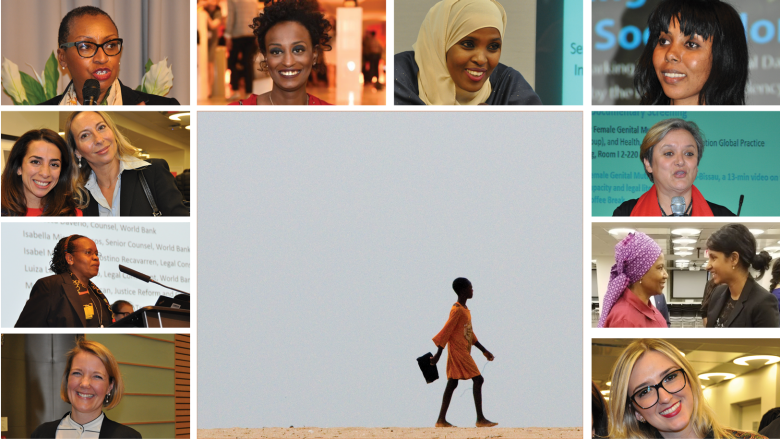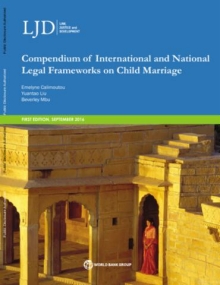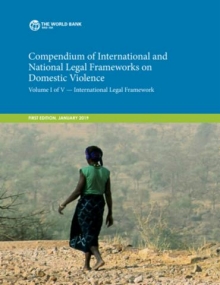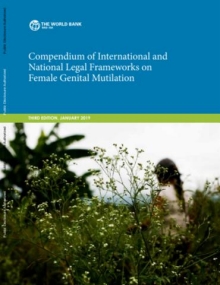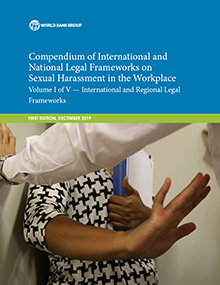The Compendium of International and National Legal Framework on Child Marriage provides a survey of the key international, regional and national legal instruments as they relate to the right to marry with the full and free consent of the intending spouses and to the obligation for government to take legislative measures to abolish child marriage. The Compendium consists of topical chapters with jump links to source documents, such as United Nations conventions, regional treaties, national constitutions and legislations.
Download:
Domestic Violence is a universal phenomenon that affects millions of women of all social strata worldwide. It is the most pervasive, common, under-recognized, underestimated and under-reported type of violence against women. It reflects discriminatory social norms, stereotypes, impunity and gender inequality. It is all too often considered as a “private, family issue”, widely accepted and minimized although it impairs the full enjoyment of life and fundamental rights and freedoms by victims and survivors who are overwhelmingly women. Domestic Violence is a development challenge and has a high economic and social cost, including health and medical costs, death, suicide, depression, lost productivity, lost income, , psychological consequences and trauma, increased stress, reactive violence, reduced ability to study or find and hold a job, judicial and prison costs, economic insecurity and abuse, debt, housing instability, homelessness, inter alia1. Beyond data and statistics, DV undermines autonomy and represents an enormous loss in terms of wellbeing not only for the women affected but also for the men who share their lives, for their children, their families and their societies. The Compendium on International and National Legal Frameworks on Domestic Violence provides a survey of the key international and regional instruments as well as national legislation as they relate to domestic violence.
Volume 1 of 5 - International Legal Framework
Volume 2 of 5 - Countries A to G
Volume 3 of 5 - Countries H to P
Volume 4 of 5 - Countries R to Z
Volume 5 of 5 - Annexes
Female Genital Mutilation/Cutting (FGM/C) is a development issue and a form of violence against women and girls that affects at least 200 million women in the world. FGM/C is a harmful practice proven to impact the physical and mental health of affected women and girls from the moment of the cutting, with prolonged and irreversible consequences during their entire lives. The Compendium on International and National Legal Frameworks on Female Genital Mutilation was prepared to contribute to this urgent and important development debate with the understanding that the knowledge of the law is an important empowerment tool to end FGM/C. It provides a survey of the key international and regional instruments as well as domestic legislation as they relate to the prohibition of FGM/C.
Download:
Sexual Harassment in the Workplace (SHWP) is a universal and widespread phenomenon that affects millions of women of all social strata worldwide. It is an endemic issue that has gained increased visibility and attention since the beginning of the “#MeToo” movement. In this Compendium on International and National Legal Frameworks on Sexual Harassment in the Workplace (the “Compendium”), SHWP is understood as a gender-specific form of violence, commonly directed against women and occurring in employment or the workplace. It includes requests for sexual favors, unwelcome sexual advances or other sexual conduct, whether physical or verbal, which involves a “quid pro quo” aspect (e.g. request for sexual favors used to make employment decisions) and/or creates an intimidating, hostile, toxic, humiliating or offensive working environment. As one of the pervasive expressions of gender-based violence, it reflects discriminatory social norms, stereotypes, impunity and gender inequality. SHWP is viewed as a development challenge and has high economic and social costs. Despite its serious implications for women, employers and society at large, the behavior is widely accepted and minimized. The Compendium provides a survey of the key international and regional instruments as well as national legislation as they relate to SHWP.
Volume 1 of 5 - International Legal Framework
Volume 2 of 5 - Countries A to G
Volume 3 of 5 - Countries H to P
Volume 4 of 5 - Countries R to Z
Volume 5 of 5 - Annexes
